Over the past year, I have used many publications to assist with my learning during the Digital Photographic Practice module. I have outlined the most relevant of these below:
Michael Freeman – The Digital SLR Handbook
To get the best out of a digital image, and to use the full possibilities that a digital SLR offers, there is a great deal to learn – particularly if you’re new to photography, upgrading from a compact point-and-shoot camera, or even finally taking the leap from conventional film to the digital world
Freeman (2011 p.9)
This book was part of the essential reading list for DPP and I admit that it has been my bible, I often find myself dipping in and out of the contents.
It appears that Photography 1: Digital Photographic Practice was written from this manuscript, as it flows in the same way as our coursework and covers everything we have looked at during the module, plus a little bit more.
Including this title, I have four books by Freeman. I like the way he writes, it is basic, logical and easy to understand; this particular book deals with everything outside of taking photos; explaining how our cameras sensor works, discussing file format and how best to profile our equipment. There is an interesting section on workflow that ties in nicely with the writings of Steinmueller and Gulbins, and also a comprehensive section surrounding image editing, which I admit to not reading in as much detail as the digital capture section at the beginning of the book. I still have much to learn from this book and hope to look at the section on delivery in the near future.
Charlotte Cotton – The Photograph as contemporary art
From conceptual art’s use of the banal and ‘artless’ snapshot to the carefully constructed tableaux of Jeff Wall, this book considers the full range of ways that today’s artists engage with photography to make art.
Cotton (2012 p.250)
As per the recommended reading list for this course, as well as on the recommendation of my tutor, I finally picked up my copy of Charlotte Cotton’s “The Photograph as Contemporary Art” before embarking on Assignment 5. I had struggled to read this book in the past, but I am finding it a little easier to digest now, perhaps that is because I have a better understanding for photography?
I actually find this a strange book, and difficult to get to grips with, it comes across as very old fashioned and in relative terms it is; with original publication back in 2004, it has been on the market for almost 10-years. My edition was published in 2009 (reprinted in 2012) and boasts a new chapter ‘emphasising the physical and material properties of photography’, but in photography terms this title is still old, five years can be a lifetime for some photographers.
Most of the images contained within its pages are as the quote above states ‘banal and artless snapshots’, and in my mind harper back to the age of the Olympus Trip or Cannon Snappy camera; when film photography was king and most images taken by the untrained and often uninterested masses.
Having now read most of this book, I have come to realise that I have very little interest in contemporary photography, especially as illustrated in the 250 pages of this book. During my research for Assignment 5, I came to understand the meaning of contemporary art and in turn contemporary photography; this kind of art is socially conscious, with its roots firmly grounded in the depiction of issues otherwise shunned by the world. Personally, images of drug addiction, lurid sexual activity and people sitting on the loo do not appeal to me, perhaps I like looking at the nicer side of life?
Yes, I understand that my own photography is contemporary (Art that has been and continues to be created during our lifetime), but personally, I do not feel the need or desire to photograph such dire situations. Yes, there is a place for this kind or imagery in the world, but please let someone else be responsible, this is just not the kind of work I am looking to achieve. However, that said, I see why this publication was included in our essential reading list for DPP; I appreciate the groundwork and thought processes taken by the authors to produce these bodies of work and the obvious conviction or ‘voice’ of each photographer. Perhaps there was a better example that could have made the list?
I am glad that I picked up this book and I am sure that this publication will continue to play a big role in my learning. If nothing else, it has taught me about the kind of photography I like, and what imagery dose not appeal to my taste, but I really should not write these artists off completely, as these photographers really are artists and have a conviction, voice and imagination for creativity, something I currently struggle with in my work.
Michael Freeman – Mastering Digital Photography
Digital cameras have taken photography in new directions, many of them exciting, some of them less certain. One of the most obvious is the instant feedback and near-immediate availability of the images, which in theory allows you to chart and improve your creative and technical progress.
Freeman (2008 p.7)
The Digital SLR Handbook (as covered above) looks behind the scenes of photo taking, while this book, Mastering Digital Photography concentrates on the actual image detail.
Again, by Michael Freeman, and included as part of our essential reading for DPP, although personally, I could have put this book to better use during my study for The Art of Photography module last year. Even though this is a stand-alone title, this book is a great companion to the Digital SLR Handbook, with easy transition between the two.
This book covers pretty much all photographic scenarios; Colour and Black & White, Natural and Electrical Lighting, People, Still Life and Landscapes including Habitats, this book has it all – in fact, it may have too much? A colossal 640-pages, and not easily moved around as it feel like a house-brick and the soft cover makes it floppy and uncontrollable at times. Although, pretty much everything has been covered, it has not been covered in great detail; each subject has been afforded two facing pages (with the odd exception), which has left some sections. In order to add more detail, perhaps the technical chapter could have been forfeit.
That said, I love this book and enjoy flicking through the pages just to look at the images. Freeman photographs regularly in Asia, so I find inspiration from his work.
Anna Fox & Natasha Caruana – Behind the Image: Research in Photography
Research and exploration are vital elements of the photographer’s practice; together they form part of the process of making photographic projects. Photographers can carry out their research in many different ways, but essentially, a body of photographic work is developed through knowledge gained in exploring the medium; investigating histories and theories of photography, observing the world, reading and listening, taking part in debate, critical reflection and numerous other activities.
Fox (2012 p.6)
I first picked this book up during the second module of DPP (Digital Image Qualities), my tutor, whilst discussing my learning log, had mentioned that I needed to start conducting more research and as I was a little unsure of how to go about this, decided to purchase this book (it is also part of the essential reading list for this course). Admittedly, I have not got much further than the first chapter, but I have flicked through the book on occasion and picked up some useful tips.
What I did read, Chapter 1 Planning, helped me visualise my current workflow and gave me ideas on how to move this forward; something I continue to do with almost every photography outing I undertake. This chapter helped me gain a fundamental understanding of research, and what it very useful about this book, it is photography specific.
As with all of the books in this review, I need to revisit this title for further consultation and I will probably find use for it in the future to further aid my studies. I am not sure if I will ever conduct any of the case studies, but they are certainly an interesting read.
Liz Wells – Photography, A Critical Introduction
This book introduces and offers an overview of conceptual issues relating to photography and to ways of thinking about photographs. It considers the photograph as an artefact used in a range of different ways and circumstances, and photography as a set of practices, which take place in particular contexts. Thus, it is essentially about reading photographic images rather than about their making.
Liz Wells (2009 p.3)
As with Cotton’s book, I really struggled with this at first, I knew that I needed to read it from a critically reflective point of view, but from the onset, I really could not see its relevance to Digital Photographic Practices. Then I realised that the best thing for me to do was read only those chapters relevant to my current work schedule, and this is when everything clicked and I turned to the chapter discussing Photography in the age of electronic imaging.
I found this chapter interesting, especially when I wrote my post from September 6th, which discusses Digital Photography and ‘truth’, you can imagine my surprise when I found that I had lots of the same thoughts and concerns as some of the academics of the time.
Another good book, once you get into it and understanding its language. It is very academic and a bit long winded in its explanations, however, not only can you follow the subject in the main body of text, but there are also footnotes in the margins, listing further reading options and additional snippets of information. This is one of those books I would recommend your sticking with, even if initially you find it hard going, it is relevant to the objective of the OCA coursework and really makes you think things through more critically.
Peter Bauer – Photoshop CS5 for Dummies
Adobe Photoshop is one of the most important computer programs of our age. It’s made photo editing a commonplace thing, something for the every person. Still, Photoshop can be a scary thing (especially that first purchase price!), comprising a jungle of menus and panels and tools and options and shortcuts as well as a bewildering array of add-ons and plug-ins
Bauer (2010 p.1)
I had great expectations for this book, probably as the title indicated its apparent easy of use; I really was looking for a comprehensive but simple guide to help me master this new and daunting programme. Unfortunately, it turned out that this was not the book to help me learn Photoshop, as it is not quiet as easy to follow as the title suggests.
The books flow is not logical, in my mind anyway, and it seems to jump around all over the place. The first part covers the basics, giving little snippets of what the book will cover over the coming pages (logical), but then things seem to jumble, as discussion surrounding shadows, highlights and colour come before any discussion about Adobe Camera RAW! Then it covers fine tuning selections before layers, image combining or masks; surly you would use the selection tool once you have at least a minimum understanding for layers?
Thankfully, I have been able to bumble through Photoshop during DPP with the help of the Internet and some podcasts I found, but I am now on the look out for a better companion to this programme. As recommended by the OCA, I have purchased a copy of Martin Evening’s Adobe Photoshop CS5 for Photographers as well as his collaboration with Jeff Schewe Adobe Photoshop CS5 for Photographers: The Ultimate Workshop, and although better late than never, I hope that this will make up for the downfall of the Dummies book.
Source:
Reference:
Bauer, P. (2010) Photoshop® CS5 for Dummies®. Hoboken, NJ: Wiley Publishing Inc.
Cotton, C. (2009) The Photograph as Contemporary Art. Revised 2nd edition. High Holborn; Thames & Hudson Ltd.
Evening, M. (2010) Adobe Photoshop CS5 for Photographers. Oxon: Focal Press
Evening, M., Schewe, J. (2011) Adobe Photoshop CS5 for Photographers: The Ultimate Workshop. Oxon: Focal Press
Fox, A., Caruana, N. (2012) Basic Creative Photography; Behind the Image. Switzerland: AVA Publishing SA.
Freeman, M. (2008) Mastering Digital Photography. East Sussex: The Ilex Press Limited
Freeman, M. (2011) The Digital SLR Handbook. Revised 3rd Edition. East Sussex: The Ilex Press Limited
Wells, L, (ed.). (2009) Photography: A Critical Introduction. 4th Edition. Oxon: Routledge

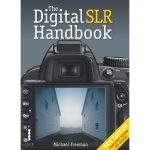
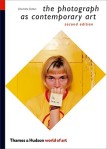
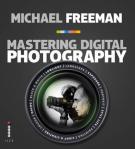
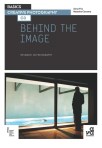
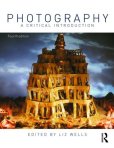
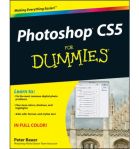
It’s an interesting post. It looks like I might add a few books to my Christmas Wish list 🙂